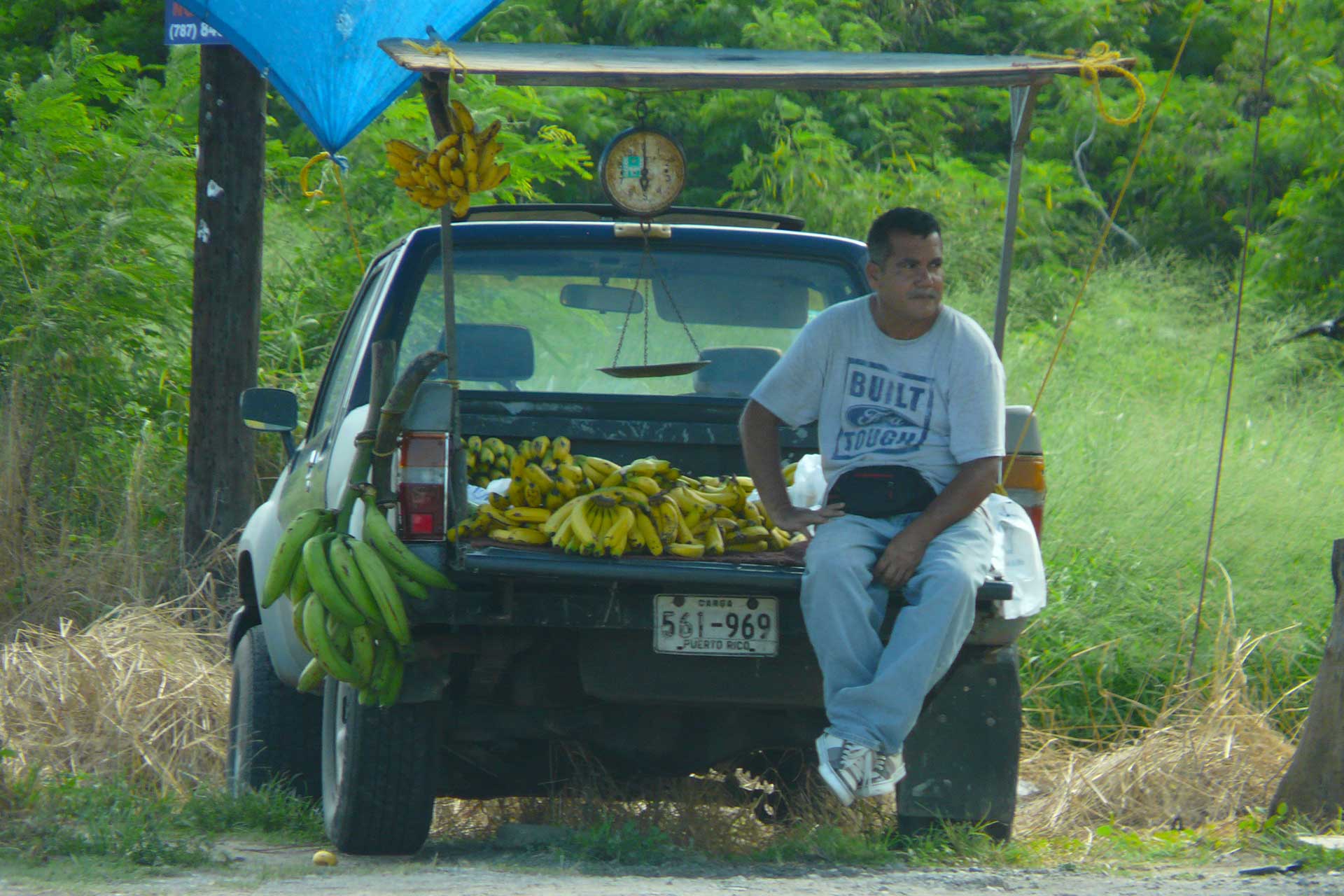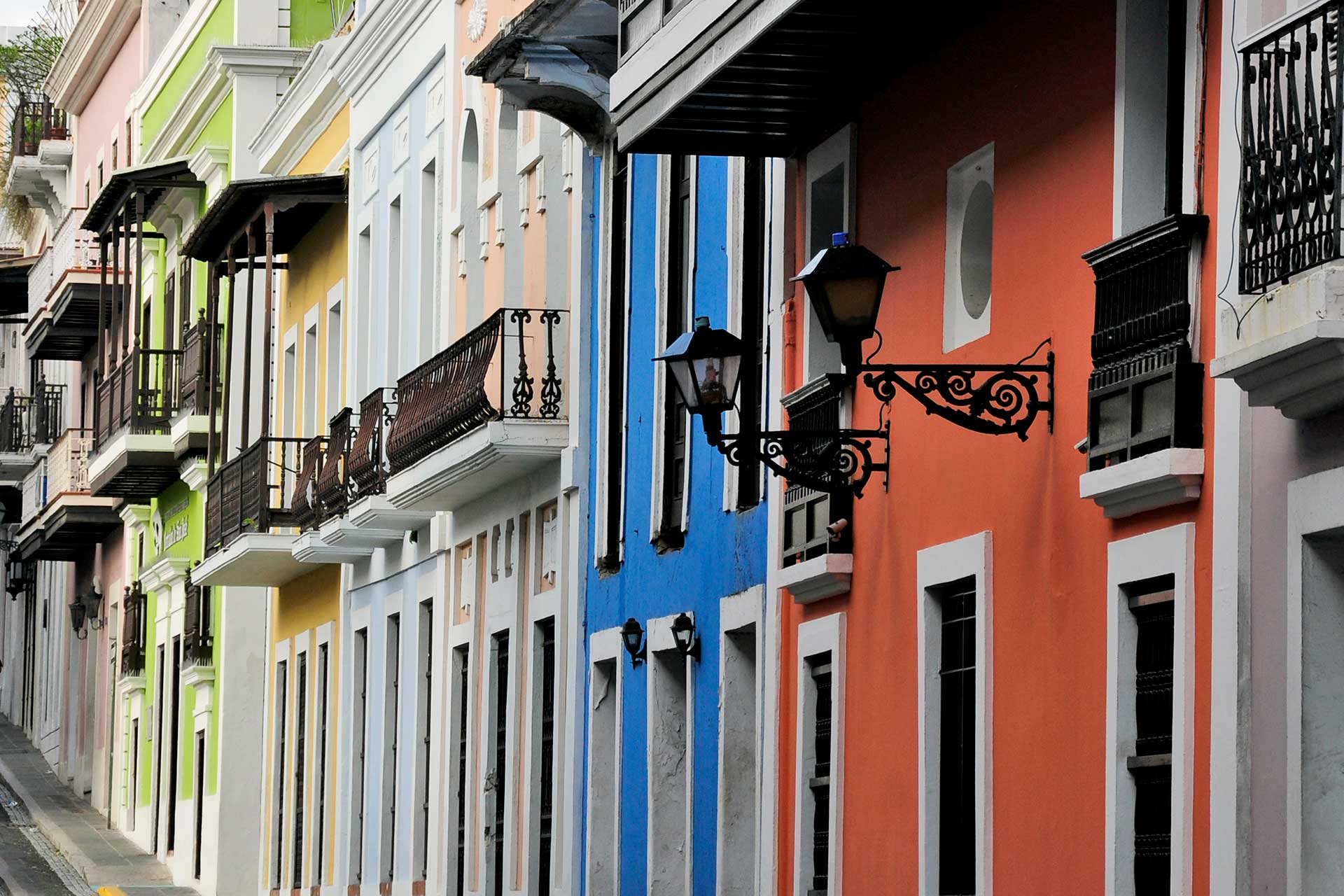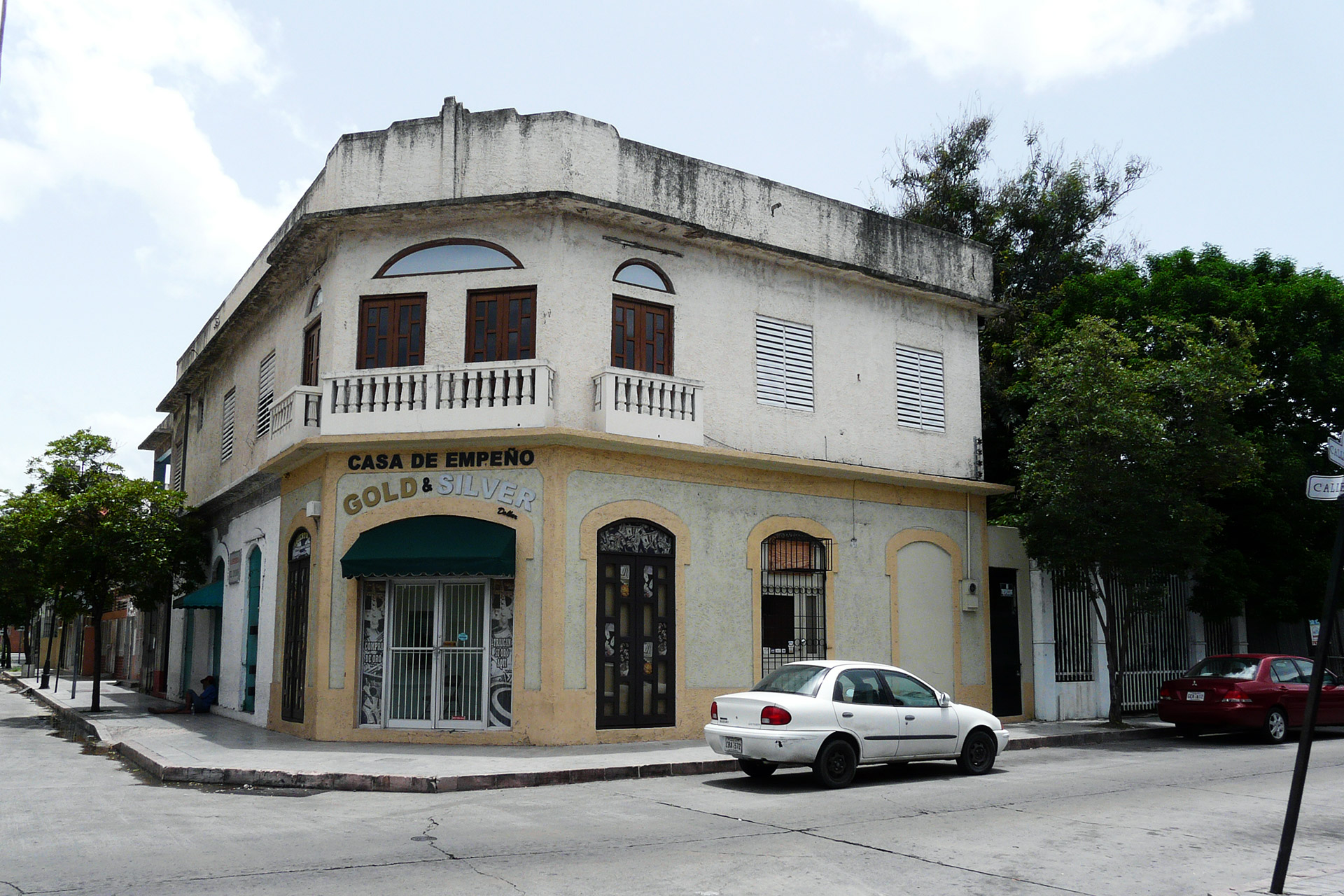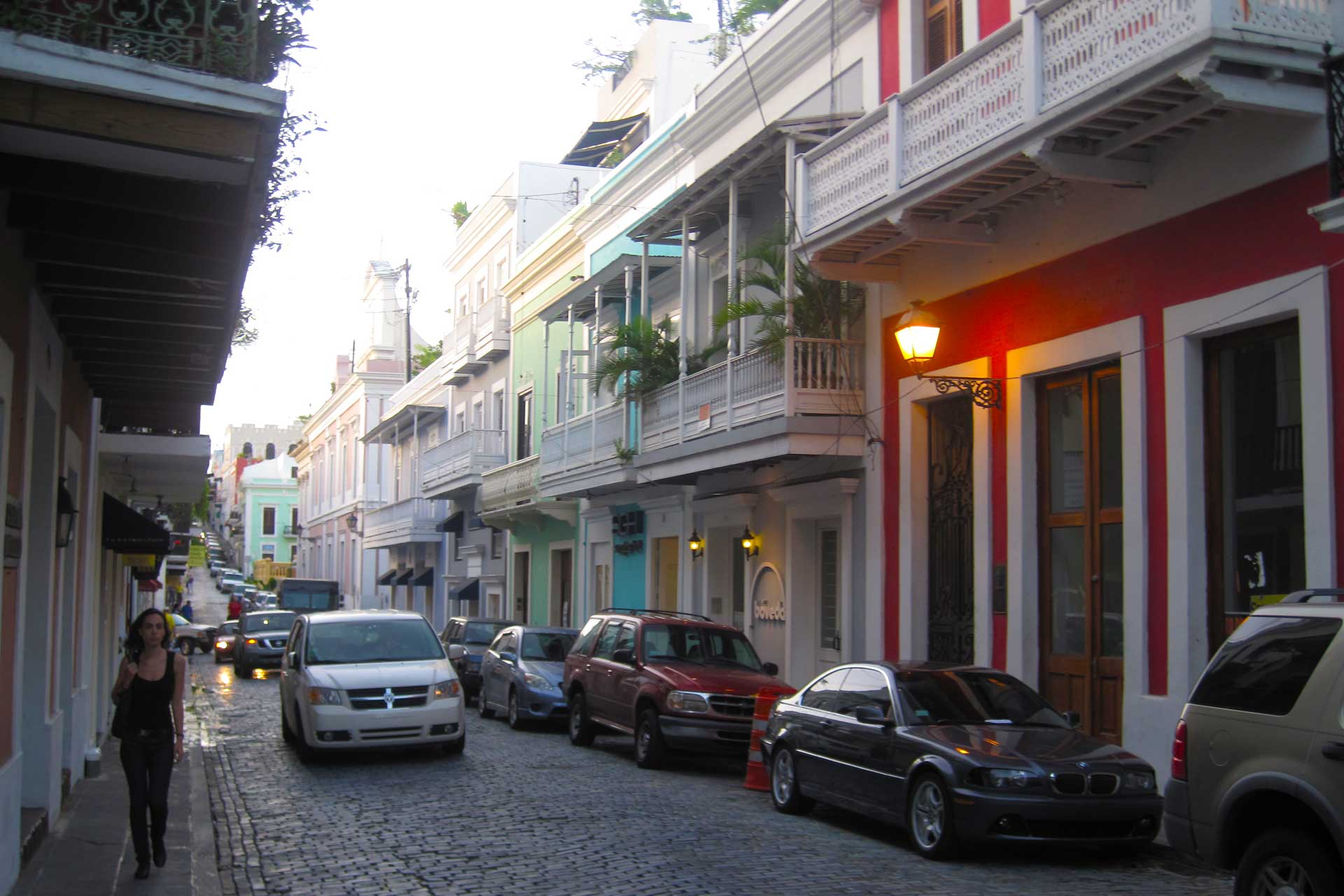Economy
Summary
Puerto Rico has been one of the most dynamic and competitive economies in Latin America and the Caribbean region until recent years, Puerto Rico's economy relies mainly on federal aid from the United States government.
Since 2006, Puerto Rico's growth has been negative since. The dip coincides with the elimination of tax preferences that had led US companies to invest in the island since the 1950s.
Until the 1940's, Puerto Rico's economy was dominated by sugar production up. Since then, manufacturing has surpassed agriculture as the primary sector of economic activity and income; composing almost half (about 46%) of the gross domestic product (GDP) of the island. The leading industries include pharmaceuticals, electronics, textiles, petrochemicals, processed foods, clothing and textiles. Followed by the service industry: finance, insurance, real estate, and tourism.
Thus, today, Puerto Rico's major problem is the lack of jobs for an expanding population and the rate of economic improvement.
History
Puerto Rico's economy prior to the arrival of Spaniards was based on hunting and gathering with agriculture. Taíno Indians who inhabited the territory were skilled at agriculture and hunting, they were also good sailors, fishermen, canoe makers, and navigators. Their main crops were cassava, garlic, potatoes, yautías, mamey, guava, and anón.
The economy of Puerto Rico was transformed drastically upon the arrivals of Spaniards in 1493 until their departure in 1898. On 1815, the Royal Decree of Grace was issued, allowing foreigners to enter Puerto Rico, and opening the port to trade with nations other than Spain. This was the beginning of agriculture-based economic growth, with sugar, tobacco and coffee being the main products.
In the late 1940s, like many other political leaders of the time, Puerto Rican leaders believed that manufacturing was the way Puerto Rico could develop economically. Soon after, the government launched an industrialization program known as "Operation Bootstrap." Under this program the island was to become industrialized by providing labor locally, inviting investment of external capital, importing the raw materials, and exporting the finished products to the U.S. market. To entice participation, tax exemptions and differential rental rates for industrial buildings were offered. Thus, Puerto Rico's economy shifted labor from agriculture to manufacturing and tourism.
Section 936 of the US internal revenue code, passed in 1976, established a substantial tax credit for US corporations doing business in Puerto Rico and possessions of the United States. The U.S. tax code exempted the profits earned by American companies from federal taxes.
Puerto Rico's economy depended heavily on these incentives. Some corporations were also allowed to import their products into the United States duty-free.
In 1993, President Clinton aimed to cut the Section 936 of the U.S. tax code. Section 936 was replaced with Section 30A, which allowed companies to claim 60% of wages and capital investment as non-taxable income. A more modest tax credit linked to wages paid by those companies in Puerto Rico rather than to profits was introduced. Pharmaceutical companies and high-tech industries based in Puerto Rico were to have an advantage over NAFTA member Mexico, whose low wages in low-skill labor-intensive jobs competed with Puerto Rican jobs.
It is estimated that 100,000 Puerto Ricans were employed by companies operating under Section 936 (of which 23,000 are in pharmaceuticals) and another 200,000 are indirectly employed.

In 1996, Congress opted to phase out Section 936 by the year 2006. To no one's surprise, many companies in Puerto Rico closed. The number of manufacturing jobs on the island dropped by almost half by 2014. The unemployment rate remains high at 12.6 percent more than twice the U.S. average rate, a factor that to continues drive the out-migration.
On the other hand, the agreement between the U.S., Canada and Mexico for the North American Free Trade Agreement (NAFTA) also has implications for Puerto Rico because of competition for jobs and investment. Although wage levels are lower in Mexico, Section 30A gives companies in Puerto Rico an advantage in pharmaceuticals and hi-tech industries. In low-skill labor-intensive manufacturing, such as clothing and footwear, Mexico has the advantage. Puerto Rico currently employs 30,000 in the clothing industry.
Puerto Rico's economy is affected by the same factors affecting the US economy. The downturn in the US economy that began in 2001 negatively impacted the Puerto Rican economy more severely than the mainland economy. The September 11, 2001 terrorist attacks on the United States also had an adverse effect on the Puerto Rican tourist industry. By 2003, the economy was beginning to show signs of stabilizing: unemployment stood at 11.9% in the first quarter of 2003, down from over 13% in 2002.
Considering all these factors, Puerto Rico's tanked economy triggered an exodus of island residents to the mainland not seen since the 1950s. The Census Bureau's Community Survey shows that in 2011 and 2012, about 55,000 residents migrated from the island to the mainland each year.
In addition, sugar production has lost out to dairy production and other livestock products as the main source of income in the agricultural sector. The principal livestock are cattle, pigs and poultry. Tourism has traditionally been an important source of income for the island, with estimated arrivals of nearly 3.2 million tourists in 2013, and a 7% of the Island's GNP, the tourism industry employees over 63,500 people.
In May 2017, the federal board filed Puerto Rico's bankruptcy, the largest ever in the $3.8 trillion municipal-bond market. Four months later on September 2017, Maria hit the island, destroying its electrical grid and stopping its economy dead.
The main government expenditures are on health, education and welfare.
Credit Rating
Standard & Poor's credit rating for Puerto Rico stands at D with negative outlook. (Aug 03 2015)
Finance
There are currently 19 commercial banks in Puerto Rico, most of them
local corporations. Local banks institutions includes: Banco Popular,
which is considered the largest banking institution in the island, with
over one hundred branches throughout the island, Banco de
San Juan, and Banco Mercantil de Puerto Rico; and branches of US: Citibank
and FirstBank; and foreign banks: Banco Bilbao-Vizcaya, and Banco
Santander, the second largest bank in Puerto Rico. The government owns
and operates two specialized banks- the Government Development Bank (GDB)
and the Economic Development Bank (EDB).
Banks offer a wide range of products and services such as checking and
savings accounts, CDs, IRAs, loans, credit and debit cards, and electronic
banking. Automatic teller machines are abundant, commonly referred to as
ATHs. Banks are insured by the Federal Deposit Insurance Corporation.
They are subject to all Federal controls applicable to banks in the United
States of America.
Stock Market
Puerto Rico does not have its own Stock Market, and many of its larger
corporations are listed on U.S. stock markets. On June 15, 2004
Popular, Inc. become the first Puerto Rican Financial Company to open the Nasdaq Stock Market.
Currency
United States dollar (USD)
Since Puerto Rico is part of the United States, the island's currency is the
US dollar. Puerto Rico relies on the U.S. government to print money and to manage
the money supply via the U.S. Federal Reserve and the Central Bank.
The US dollar is divided into 100 cents (¢) and referred by locals as "peso".
Coins: 1¢, called the centavo or chavito (penny); 5¢, called the vellón or ficha (nickel); 10¢ (dime); 25¢, called the peseta (quarter); and the seldom-seen 50¢ (half-dollar) coin and $1.
Bills: $1, $2, $5, $10, $20, $50, $100, $500, $1,000, $5,000, and $10,000. On July 14, 1969, the Treasury Department and the Federal Reserve Board announced that they would immediately stop distributing currency in denominations of $500, $1,000, $5,000 and $10,000. Production of these denominations stopped during World War II. Their main purpose was for bank transfer payments.
Currency Exchange Rate: 1 US dollar equals 0.92 Euro (Apr 2023)
Market Value Stats
Gross National Income (GNI per capita) (formerly GNP per capita):
$70.8 billion (2019)
per capita: $22,160 (2019)
Puerto Rico is classified as a high income country, high income countries are defined by the World Bank as countries with a Gross National Income (GNI) per capita of $11,116 or more.
Interesting Fact
The Gross Domestic Product, or GDP, measures the amount of goods and services (economic activity),
measured at market prices, and produced within the country during a particular time period (usually a
year). The Gross National Income, or GNI (formerly Gross National Product, or GNP), is the amount of goods
and services produced by residents of a country, regardless of where that production takes place. In other
words, the GDP is the value of the goods and services produced within the country, while the GNI is the
value of goods and services produced by citizens of a country. For example, when an American company
generates profits from a production in Mexico, these profits would be counted towards the U.S. GNI, not
towards the Mexican GNI. Yet, these same profits will be counted as part of Mexican GDP, not the U.S. GDP,
because the production takes place within geographic boundaries of Mexico.
Gross Domestic Product (GDP) - purchasing power parity
$137.828 billion (2023 est.)
$137.056 billion (2022 est.)
$132.334 billion (2021 est.)
GDP (official exchange rate):
$117.902 billion (2023 est.)
$104.2 billion (2017 est.)
GDP - real growth rate:
0.56% (2023 est.)
3.57% (2022 est.)
0.39% (2021 est.)
GDP - per capita (purchasing power parity):
$43,000 (2023 est.)
$42,600 (2022 est.)
$40,600 (2021 est.)
| Country | 2000 | 2008 | 2009 | 2010 |
|---|---|---|---|---|
| Puerto Rico | 10,000 | 18,100 | 17,400 | 16,300 |
| United States | 36,200 | 48,300 | 46,700 | 47,400 |
| Jamaica | 3,700 | 8,800 | 8,500 | 8,400 |
| Cuba | 1,700 | 9,700 | 9,800 | 9,900 |
Puerto Rican workers are covered by the U.S. Federal Fair Labor Standards Act (FLSA) are subject only to the Federal minimum wage ($7.25) and all applicable regulations. Workers not covered by the FLSA will be subject to a minimum wage that is at least 70 percent of the Federal minimum wage or the applicable mandatory decree rate, whichever is higher. Labor costs are below the mainland average, but are higher than in other areas of the Caribbean Basin.
Gross Domestic Product: real growth rate - 0.21% (2021 est.)
- GDP - composition, by end use:
- household consumption: 80% (2023 est.)
- government consumption: 7.1% (2023 est.)
- investment in fixed capital: 13.7% (2023 est.)
- investment in inventories: 0.5% (2023 est.)
- exports of goods and services: 53.9% (2023 est.)
- imports of goods and services: -47.8% (2023 est.)
- GDP - composition by sector:
- agriculture: 0.7% (2023 est.)
- industry: 49.1% (2023 est.)
- services: 50.6% (2023 est.)

Labor Stats
Labor Force:
1.154 million (2023 est.)
1.136 million (2021 est.)
1.1 million of persons 16 years and over (2020)
1.081 million (November 2018 est.)
Labor force - by occupation: Services: 35.2%, Trade: 23.4%, Government: 17.2%, Manufacturing: 10.2%, Construction: 4.7%, Transportation and other public utilities: 4.1% Finance, insurance and real estate: 3.6%, Agriculture: 1.6% (2019)
Construction Growth: 15% (1997 est.)
Construction is currently one of the most dynamic activities in Puerto
Rico's economy. Since the mid-1980s, the construction industry has
grown faster than most other economic sectors, helping to sustain
the overall growth of the economy.
Organized Labor:
115,000 members in 4 unions; the largest is the
General Confederation of Puerto Rican Workers with 35,000 members (1983).
Unemployment Rate:
5.96% (2023 est.)
6% (2022 est.)
7.9% (2021 est.)
Youth unemployment rate (ages 15-24)
total: 13.7% (2023 est.)
male: 14.9% (2023 est.)
female: 10.5% (2023 est.)
Average Hourly Wage: $8.08/hour, well below the U.S. average.
Minimum Wage Rate (per hour): $7.25 (2016)
Basic Minimum Rate (per hour): $2.13 to $5.12. (2016)
Population Below Poverty Level:
43.5% (2019)
43.1% (2018)
According to the US Census Bureau -
that's nearly double the poverty rate in Mississippi, the most impoverished of the fifty states.
Interesting Fact
What is the poverty income level?
The U.S. Department of Health and Human Services and U.S. Census Bureau both record poverty statistics for the United States, but they each have their own calculations for the poverty income level.
The poverty guidelines are not defined for Puerto Rico, the U.S. Virgin Islands, American Samoa, Guam, the Republic of the Marshall Islands, the Federated States of Micronesia, the Commonwealth of the Northern Mariana Islands and Palau.
Puerto Rico uses its own poverty level which is significantly lower than the FPL - roughly equal to half of it.
In February of each year the U.S. Department of Health and Human Services (HHS) issues the Federal Poverty Guidelines in the Federal Register. These poverty guidelines are one version of the federal poverty measure.
The poverty level as defined by the HHS in 2017 was $20,420 a year for a family of three, or $24,600 for a family of four.
Another version by the Census Bureau, calculates the poverty thresholds using the federal Social Security Administration's official poverty definition, who coincidentally works with the HHS in the administration of certain programs.
The poverty level as defined by the Census Bureau in 2017 was $29,360 a year for a family of five.
- Households and Families
- Median Household Income: $19,775 (2017)
- Total Households: 1,261,325 (2016)
- Average population per family: 2.81 (2013-2017)
- Average population per household: 2.98 (2000)
Inflation Rate (consumer prices):
-1.60% (August of 2020)
1.8% (2017 est.)
-0.3% (2016 est.)
Commercial bank prime lending rate:
4% (31 December 2016 est.)
3.3% (31 December 2015 est.)
Food Inflation -1.10% (July of 2016)
Taxes
Puerto Rico general sales and use rate increased from 7% to 10.5% with an effective total tax rate of 11.5% on many transactions when combined with the municipal sales and use tax of 1% (as of July 1, 2015). Puerto Rico now has the highest sales tax in America. In addition, in the event that the governor determines an insufficiency in collections for the general fund an additional 1% to the central government will be imposed.
All inbound shipments to Puerto Rico are subject to a local excise tax. Merchandise and/or articles arriving from the U.S. that will be sold, consumed, given away, and/or remain in Puerto Rico are subject to a 6.6% Puerto Rico excise tax that is calculated from the commercial invoice value. This is payable upon entry to Puerto Rico.
Puerto Rico has it own tax system. Although it is modeled after the U.S. system, there are differences in law and tax rates.
The Puerto Rico tax system is based on self-assessment. Taxes are paid to the state, most Puerto Ricans don't pay federal income taxes, but they do pay Social Security, Medicare, import, export and commodity taxes. Individual taxpayers are required to file an annual income tax return when minimum-income thresholds are met. They report taxable income and deductions, compare their final tax liability to any income tax withheld or estimated tax paid, and determine any balance due or overpayment of tax due from the Treasury.
For information about the filing taxes in Puerto Rico contact the Bureau of Income Tax at the following address:
- Negociado de Asistencia
- Contributiva y Legislación
- Departmento de Hacienda
- P.O. Box 565
- San Juan, Puerto Rico 00902-6265
- (787) 721-2020, ext. 3611
To obtain tax forms, contact the Forms and Publications Division Office at the above address or call (787) 721-2020, extensions 2643, 2645, or 2646 or visit the Internal Revenue Service web site.
These forms are also available online along with the other tax forms, instruction booklets, etc. To obtain these forms visit the Departmento de Hacienda web site.
Corporate Tax Rate 39% (Nov 2016)
Personal Income Tax Rate 33% (Nov 2016)

Exports and Imports
Exports:
$59.787 billion (2022 est.)
$57.916 billion (2021 est.)
$62.237 billion (2020 est.)
$63.7 billion (2019)
$73.17 billion (2017 est.)
$70.41 billion (2016 est.)
Export Commodities: Pharmaceuticals, chemicals, medical equipment & supplies, computers, electronics, electrical equipment, food, machinery. (2020)
Export Partners: US 75.7%, Netherlands 4.2%, Italy 2.9%, Belgium 2.8% and Spain 1.8%. (2019)
Imports:
$51.509 billion (2022 est.)
$45.052 billion (2021 est.)
$44.513 billion (2020 est.)
$49.4 billion (2019)
$49.01 billion (2017 est.)
$47.61 billion (2016 est.)
Imports Commodities: Pharmaceuticals, chemicals, petroleum products, food, computer and electronic products, motor vehicles, machinery, plastics and rubber products, electrical equipment. (2019)
Imports Partners: US 49.9%, Ireland 12.6%, Singapore 5.1%, South Korea 4.9% and Switzerland 4.0%. (2019)
External Debt: $56.82 billion (31 December 2010 est.)
Public Debt:
51.6% of GDP (2017 est.)
Debt - external:
$56.82 billion (31 December 2010 est.)
country comparison to the world: 59
Revenues:
$31.3 billions (Consolidated Budget) (FY-2010)
increase $13.1 billions (Net Revenues, Commonwealth) (FY-2010)[11]
Expenses:
$29.1 billions (Consolidated Budget) (FY-2010)
decrease $10.2 billions (Commonwealth) (FY-2010)
Industries
Manufacturing accounts for 46.4% (2010) of GDP: manufacturing of pharmaceuticals, chemicals, machinery, electronics, apparel, food products, instrument, textiles, clothing, and tourism.
Manufacturing:
Puerto Rico's manufacturing sector has shifted from the original
labor-intensive industries, such as the manufacturing of food, tobacco,
leather, and apparel products, to more capital-intensive industries, such
as pharmaceuticals, chemicals, machinery, and electronics. Major
manufacturing activities in the order in which they contribute to the
manufacturing domestic income are chemical and allied products, machinery
and metal products, food and kindred products, apparel and related
products, printing and publishing, leather and leather products, stone,
clay, and glass products, tobacco, paper and allied products, and textile
mill products.
San Juan and Mayagüez are the leading centers for making clothing.
Manufacturing Average Hourly Earning: $7.85
Manufacturing Average Weekly Earning: $310.86
Percentage of Manufacturing Employment by Industry Group:
Chemical and allied products 18.2%, Apparel and other textile
products 15.5%, Electronic 15.2%, Food and kindred products
13.2%, Instruments and related products 9.8%, Paper and related products
4.7%, all other manufacturing 23.3%
Resources: (1999)
- Fuel Purchase: 35,631,482 barrels
- Fish: 7,493,000 pounds
Total value: $16,791,000 - Livestock: 38,680,000 pounds
Total value: $31,908,000 - Minerals: Mining activities are limited to quarry operations
- Electricity: Annual energy production: 20.9 billion kWh (2001)
- Total capacity: 5390 megawatts/hour
Energy:
Oil is the dominant fuel in Puerto Rico's energy mix.
- installed generating capacity: 6.18 million kW (2020 est.)
- consumption: 15,203,140,000 kWh (2019 est.)
- exports: 0 kWh (2020 est.)
- imports: 0 kWh (2020 est.)
- transmission/distribution losses: 2.5 billion kWh (2019 est.)
Electricity generation sources
- fossil fuels: 94.8% of total installed capacity (2020 est.)
- nuclear: 0% of total installed capacity (2020 est.)
- solar: 1.4% of total installed capacity (2020 est.)
- wind: 3.4% of total installed capacity (2020 est.)
- hydroelectricity: 0.3% of total installed capacity (2020 est.)
- tide and wave: 0% of total installed capacity (2020 est.)
- geothermal: 0% of total installed capacity (2020 est.)
- biomass and waste: 0.1% of total installed capacity (2020 est.)
Coal
Petroleum
- total petroleum production: 0 bbl/day (2021 est.)
- refined petroleum consumption: 79,000 bbl/day (2019 est.)
- crude oil and lease condensate exports: 0 bbl/day (2018 est.)
- crude oil and lease condensate imports: 0 bbl/day (2018 est.)
- crude oil estimated reserves: 0 barrels (2021 est.)
Natural gas
Carbon dioxide emissions: 18.999 million metric tonnes of CO2 (2019 est.)
- from coal and metallurgical coke: 3.774 million metric tonnes of CO2 (2019 est.)
- from petroleum and other liquids: 11.407 million metric tonnes of CO2 (2019 est.)
- from consumed natural gas: 3.818 million metric tonnes of CO2 (2019 est.)
Energy Consumption per capita: 94.379 million Btu/person (2019 est.)
Electricity Costs:
The cost of electrical services in the industrial sector
depends on the consumption and the kind of service provided. (example for
services provided under 50 KVA included below)
- monthly charge = $5.00
- energy per KW/hr = $0.065,
- fuel adjustment charge per KW/hr = $0.034858
Industrial Production Growth Rate: -2.1% (2017 est.)
Tourism:
Number of tourists: 3.07 million (2018)
Receipts from visitors: U.S. $3.28 billion (2018)
Receipts per tourist: $1,070 (2018)

Agriculture:
Until 1955, agriculture constituted Puerto Rico's main economic sector.
Sugar cane, mostly for export to the American market, was the main crop,
followed by coffee and tobacco. Sugar cane production declined as prices
remained low, agricultural labor migrated to the United States, and urban
expansion took over much sugar cane land. Coffee production, taking place
mostly in the mountainous areas away from the pressures of urban expansion
and supported by guaranteed minimum prices, has remained stable. Tobacco
production has virtually disappeared. Considerable expansion has occurred
in the production of dairy products, beef, pork, eggs, and poultry,
although significant amounts of these products are still imported,
primarily from the United States. There is also production of fruits and
garden vegetables as well as of starchy vegetables, such as bananas and
plantains.
Today, agriculture accounts for only 3% of labor force and less than 1% of GDP, concentrating primarily to crops which can be sold in the United States. Coffee is the most valuable crop, followed by vegetables, sugar cane, fruits (pineapples, plantains, bananas), milk, eggs, and livestock (cattle, chickens, pork).
Interesting Facts
- Migration has played a large role in social and economic changes since the 1950s. In the 1950s and 1960s, the government encouraged a massive migration of poor agricultural workers to the east coast of the US to help create a predominantly industrial economy. The number of Puerto Ricans is now about equal to the island's population.
- Puerto Ricans are another immigrant group that has had a significant impact on the economy and culture of New York since World War II. Several hundred thousand reside in the state, mostly in New York City. After a heavy immigration of Puerto Ricans during the 1950s and early 60's, the growing economic strength of Puerto Rico led to a considerable reduction, with those entering the state being largely offset by those returning to Puerto Rico.
- Some of the best-educated young people leave because of better opportunities and labor conditions on the mainland.
- Statistics show that it has some of the most favorable economic conditions; the gross national product (GNP) is growing much more rapidly than the population, and the GNI per capita (formerly GNP per capita) is one of the highest in the Caribbean, but in comparison with the United States, Puerto Rico is still below that of the poorest state in the mainland, Mississippi. In 1989, Puerto Rico received 72 times more food stamps than Mississippi, half the island's population currently receives food stamps.
Economic Aid: none
Economic Development:
Economic Development Administration (Administración de Fomento
Económico) 787-758-4747
Puerto Rico Industrial Development Company 1-888-577-4326
Small Business Administration 787-766-5572
Books
- Economic History of Puerto Rico
- The Political Economy of Colonialism: The State and Industrialization in Puerto Rico
- Puerto Rico: The Trials of the Oldest Colony in the World
- Teodoro Moscoso and Puerto Rico's Operation Bootstrap
Other Resources
- Origins of the Puerto Rico Fiscal Crisis
- A Glance at Puerto Rico's Economy, September 2001, Government Development Bank of Puerto Rico (PDF)
- Economy at a Glance - Puerto Rico
- Gross State Product > Current Dollars (per capita) (most recent) by state
- Here's how Puerto Rico got into so much debt
- Poverty: 2008 and 2009 (PDF)
- Puerto Rico 1997 Economic Census of Outlying Areas Manufacturing - Issued March 2000, U.S. Census Bureau, 1997 Economic Census (PDF)
- Puerto Rico 1997 Economic Census of Outlying Areas Wholesale Trade, Retail Trade, Service Industries - Issued December 2000, U.S. Census Bureau, 1997 Economic Census (PDF)
- Puerto Rico Department of Labor and Human Resources
- Puerto Rico Economic Indicators
- Puerto Rico Economic Indicators, July 2, 2003, Government Development Bank of Puerto Rico (PDF)
- Puerto Rico's Economic Trends & Outlook, June 2003, Government Development Bank of Puerto Rico (PDF)
- United States vs. Puerto Rico Quality of Life Comparison




